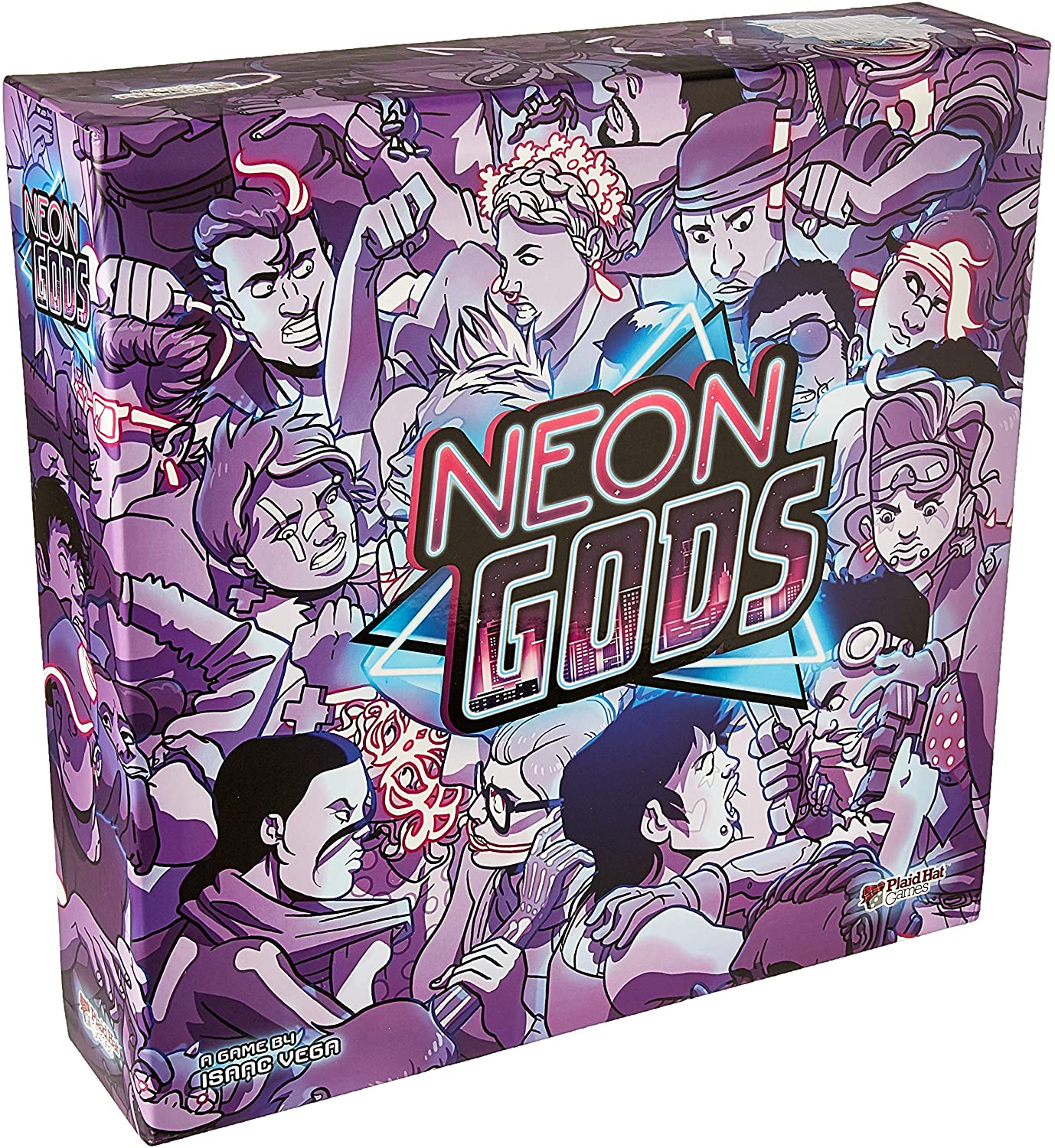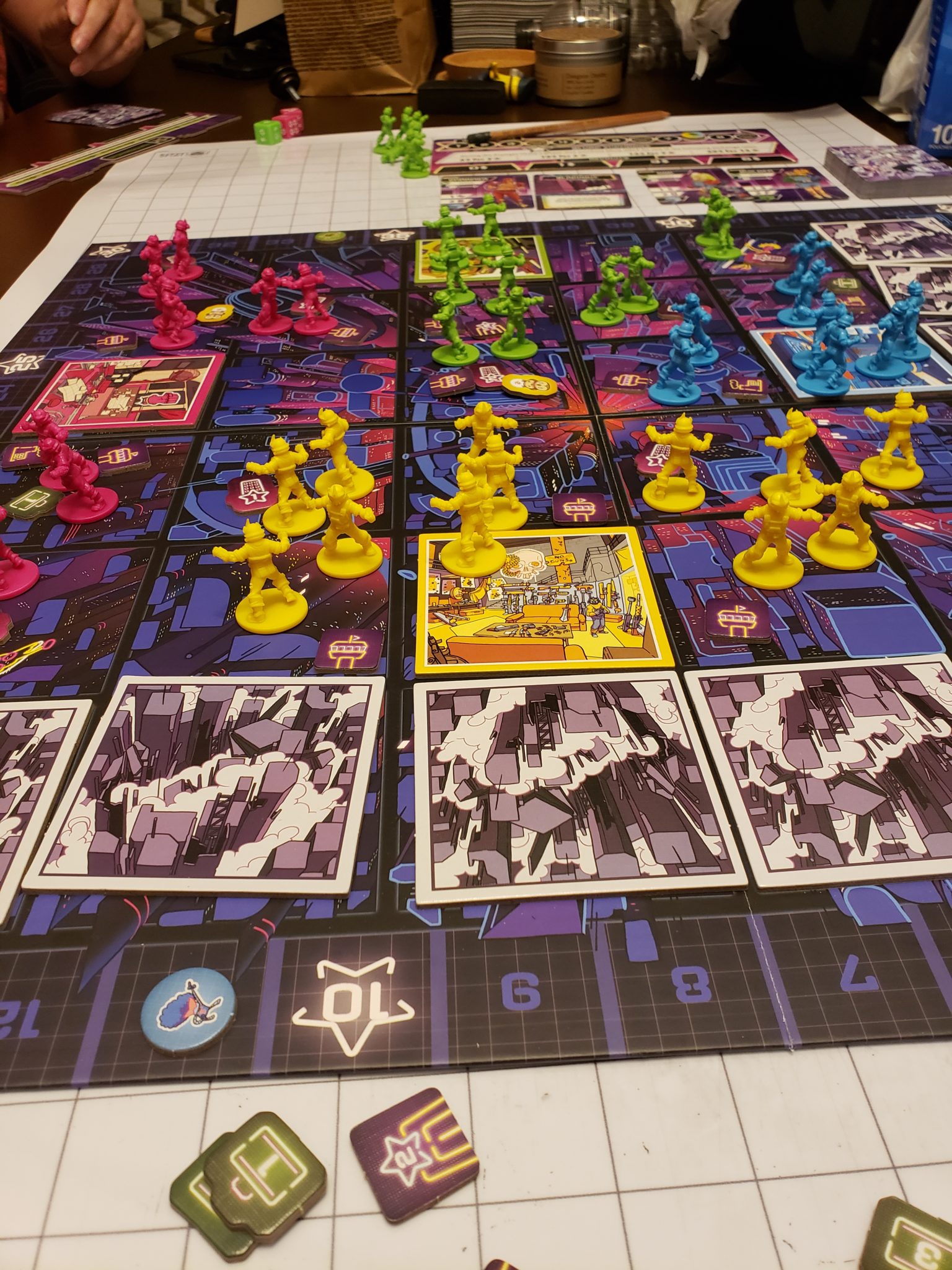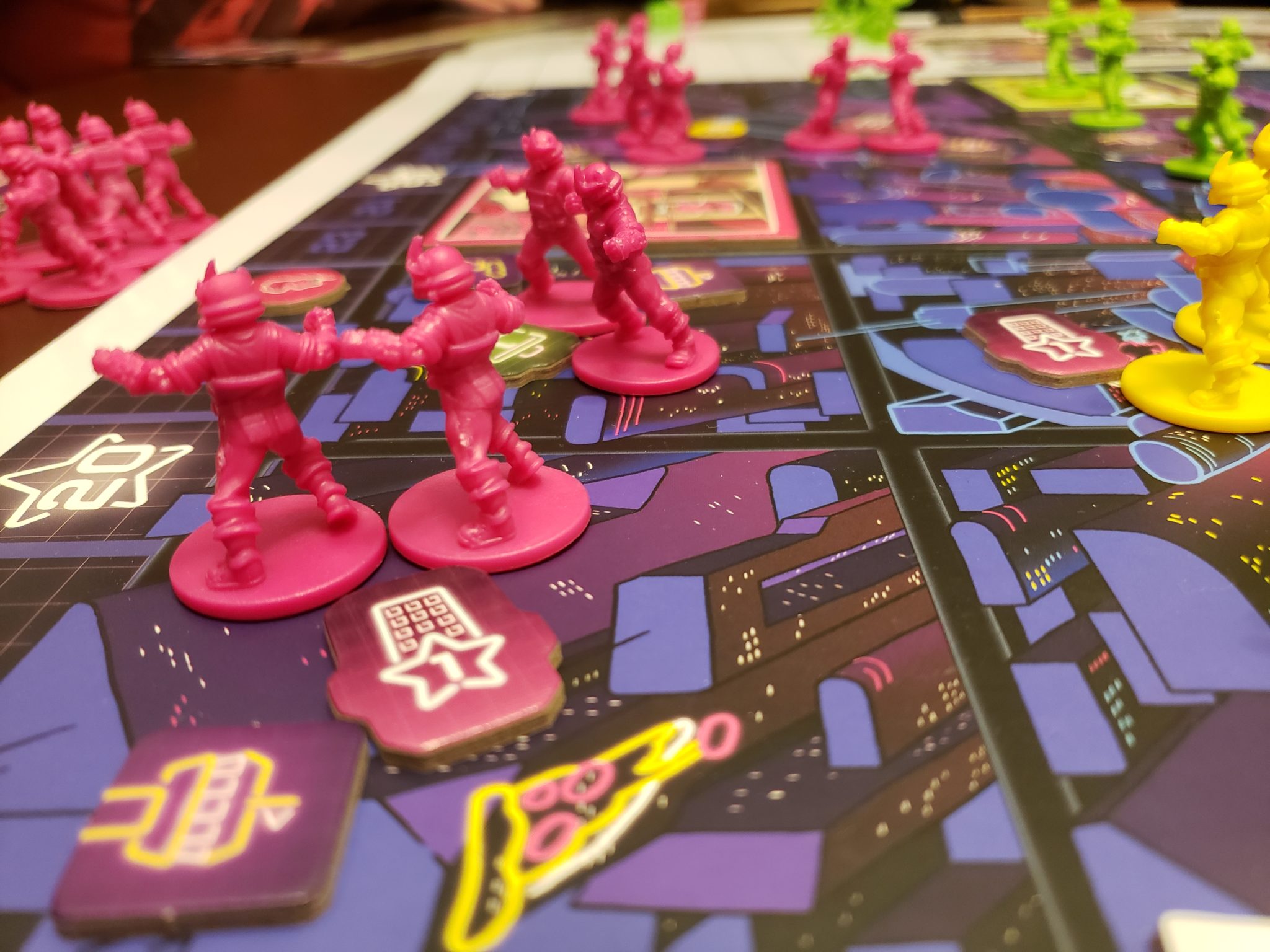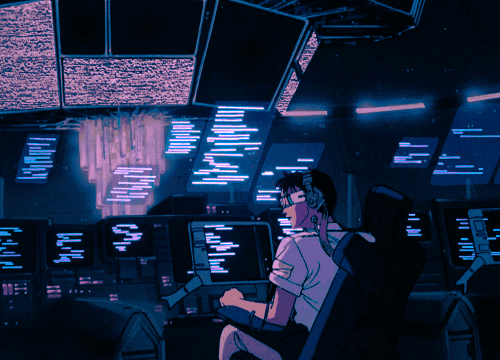The cyberpunk genre asks many questions of its audience. How much control do corporations have over people? Where does technology become too omnipresent? How do we fight capitalism in a world controlled by it? What does it mean to be human? None of these questions are asked (or answered) by Neon Gods, a 2018 release from Plaid Hat Games and designer Isaac Vega (Dead of Winter, Forgotten Waters).
Set in a future world of 1984, Neon Gods takes a more colorful and lighthearted approach to the cynical sci-fi of the 70’s and 80’s. Jokes and pop culture references abound as every trope of the genre is bent, exaggerated, and parodied within an inch of its blurpin’ life. But underneath the humorous setting is a fast-paced area control game with plenty of replay value and just enough strategy to make things interesting.

What’s In The Box?
Purple. A lot of purple. This is, as the title indicates, a colorful game, and there aren’t really any neutral tones to be had anywhere.The artwork by Igor Wolski is expressive, chaotic, and drenched in the tones of the neon 80’s. Rather than the drab and depressing aesthetics we normally associate with the cyberpunk genre, we get an in-your-face explosion of cartoony characters, many of them pop culture references (the stand out being the one that looks like Freddie Mercury.) This is another game that uses symbols rather than words to represent the different parts of the game, which makes the learning curve a little steeper but speeds things up considerably and makes things easier to read.

The minis that represent your gang are well made and super detailed, though they’re a little…same-y. As in literally every single one is the same. Their purpose on the “battlefield” is obviously meant to be in the abstract, but with the gangs as distinctive as they are in this game, it’s kind of a shame that they weren’t able to give the minis as much character. Also, the game has the same problem as Abomination: The Heir of Frankenstein in that the box is just a trough to hold all the pieces. It works alright thanks to there being fewer moving parts, but it’s definitely less secure. There’s also not enough dice included.
How’s It Play?

Like any game centered around gang warfare, Neon Gods is all about controlling your turf. But you can’t take, control, or keep your turf without your gang being as strong as possible. The game essentially has two phases (though each one has its own subsets of actions). The first is when the game feels like a sort of limited deck-builder, where players use their resources to hire new gang members to join up, each with their own specialty and mix of actions. These cards, when drawn and played each turn, dictate what your on-board actions are, what resources you have, and what you can build.
These cards, along with special event cards that change the face of the game but are so infrequent they don’t feel that impactful, are for sale and each round they get cheaper. It’s a great way to add some tension to the game and encourage the sort of backstabbing and strategy you’d expect.You also can build buildings to help get you blurp (victory points), hold territory, or generate income that can help fund more projects and recruitment.
The second phase of the game is on the board, when the cards you’ve chosen to play actually matter. This manifests as being able to move your gang, expand your empire, build new structures, and fight. The fighting is one of the most enjoyable parts of the game, and the game modes that encourage it are definitely my favorite. Each card you recruit, in addition to the actions you get, have a certain die or dice on them. Blue dice are standard, pink dice do more damage, and green dice give you the ability to steal money from your opponent.
When it’s time to fight either an Andy (the not-robocops of the setting) or one of your opponents, you select from the remaining cards in your hand (or just trust your deck and draw new ones) and play them. Then, you roll the corresponding dice and see who got more hits, adding in proximity to other gang members and watch towers. The chaotic part of this game is when you have four players all vying for control, fighting each other for territory, and fending off all comers. There’s a lot of strategy in the selection of gang members and placement of buildings, but when it comes to gang warfare anything is possible.
The Verdict

I really liked Neon Gods, though the theme and flavor of the game are doing a lot of work. Both of them are on point, and the various generals and gang members you can recruit have tons of character. It’s all supported by art which is cartoonish and fun while still capturing the aesthetic of the genre it’s parodying.
Gameplay-wise, it’s a little unfocused. The deck-building and the area control and the resource management all work on their own, but it’s a little disjointed. Some elements are less important than others, and in certain game modes (which are a feature I do like thanks to the replayability) aren’t even a factor. I’d have liked to have seen a bit more synergy between the mechanics, but as I’ve said a lot of the problems are smoothed over by how silly the game is and how, despite the gaps, is still pretty dang fun. A definite recommendation for any big fan of cyberpunk or retro sci-fi.
[rwp_box id=”0″]
You can pick up Neon Gods on Amazon or at your FLGS!
Images and review copy via Plaid Hat Games
Have strong thoughts about this piece you need to share? Or maybe there’s something else on your mind you’re wanting to talk about with fellow Fandomentals? Head on over to our Community server to join in the conversation!

